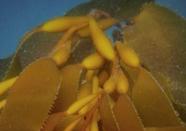Activity: Making a waka kōrari - Levels 1-2
Exploring floating and sinking by looking at waka kōrari
Achievement Objectives - Whāinga Paetae: Te Tōpana me te Nekenga
1.2 & 2.1 Explore and experience motion, floating, pushes and pulls. Te Marautanga o Aotearoa: (p.98-99) Ō Ahupūngao, Te Tōpana me te Nekenga, Taumata 1.1 and Taumata 2.1.
Learning outcome
I will be able to:
- test substances to see if they sink or float
- explain why some objects float
- explain why some objects sink.
Success criteria
| Success criteria | Self-assessment | Peer assessment | Teacher assessment | ||||||
|
|
|
|
|
|
|
|
|
|
|
| I can test substances to see if they sink or float. | |||||||||
| I can explain why some objects float. | |||||||||
| I can explain why some objects sink. | |||||||||
Exploring floating and sinking by looking at waka kōrari
In this activity you will be testing objects to see if they sink or float. These objects can be used later to make your own waka kōrari. You can choose either modern or natural materials.
Equipment
| Modern materials | Natural materials |
|---|---|
|

Stephen Williams
|
Method
Write a list of the materials that you will be using in the table below. Next to each make a prediction as to will the material sink or float.
Material
Will it float or sink?
Does it float or sink?
Things that might help it float or sink.
- Now test each material in some water to see if you were correct about it sinking or floating. Write down the things that might help it float or sink. Some materials may appear to float but then gradually sink; others may appear to sink but then float below the surface. Did you notice this happening with any of your materials?
- Choose some of the materials that floated and try pushing the material to the bottom of your water container. Which is strongest – the push of your hand on the object or the push of the object against your hand? Are they both equal?
- Have a look at the objects that floated. Is it possible to make any of these objects sink? How could you do this and which object would you choose? Test your ideas out on this object. Did it sink?
- What do you think would happen to seaweed that does not have air bladders?
- Find out why having air bladders helps seaweed survive.
- Compare the hull of your waka with the waka ama. What differences are there between the two hulls?
For teachers
For more information see ‘Floating and Sinking’ Building Science Concepts Book 37.
